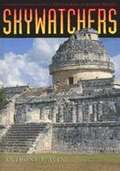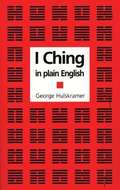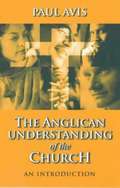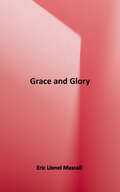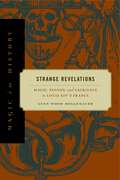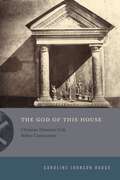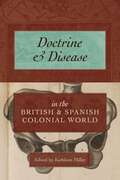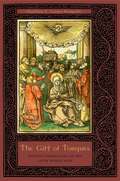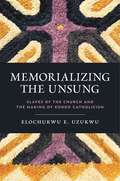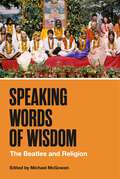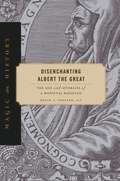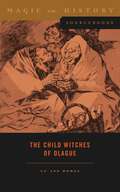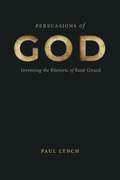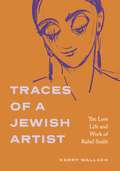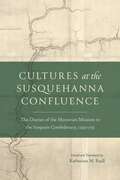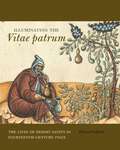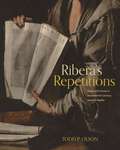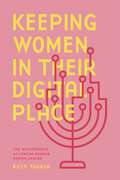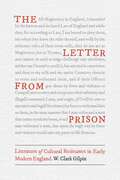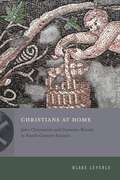- Table View
- List View
Skywatchers: A Revised And Updated Version Of Skywatchers Of Ancient Mexico
by Anthony F. AveniSkywatchers of Ancient Mexico helped establish the field of archaeoastronomy, and it remains the standard introduction to this subject. Combining basic astronomy with archaeological and ethnological data, it presented a readable and entertaining synthesis of all that was known of ancient astronomy in the western hemisphere as of 1980.
I Ching In Plain English
by George Hulskramer Rosalind BuckThe I Ching is based on the idea that all phenomena in the universe are founded on two opposing forces. Initially these forces were referred to simply as dark and light. Later, the terms were changed to Yin and Yang. Yin is the female, passive, flexible and gentle force at work in the universe, and Yang, the male principle, is characterised by decisiveness, activity, hardness and a certain rigidity. In the I Ching, all forms of life and therefore also the functions of the human spirit are associated with Yin and Yang. The Yin and Yang forces are at work in all processes of growth and decay, in the cycle of the seasons, in everything we think, do, experience and undertake. In fact, without the interaction of Yin and Yang, there would be no life.
The Anglican Understanding of the Church: An Introduction
by Paul AvisA clear and readable introduction to the distinctive Anglican understanding of the Church, its origins, beliefs, structure, form and function, what it has in common with other churches and where it differs.
The Gospel and The Catholic Church
by Michael RamseyThe underlying conviction of this book is that the meaning of the Christian Church becomes most clear when it. is studied in terms of the Death and Resurrection of Jesus Christ. The author attempts to apply this conviction to some of the problems concerning the doctrine of the Church. What is the nature of Christian fellowship in contrast with other ideas of unity amongst men? Is Episcopacy merely a convenient form of Church govern¬ment, or has it some deeper meaning in the Gospel of God? These are among the questions which this book discusses, by expounding the Church as a part of the Gospel of Christ crucified.
Theology and the Gospel of Christ: An Essay in Reorientation
by E. L. MascallThe four chapters of which this book is composed have more in common than may appear on the surface. They are the outcome of a conviction, reached with reluctance and distress and after long and anxious thought, that the theological activity of the Anglican Churches is in a condition of extreme, though strangely complacent, confusion and that this is having a disastrously demoralizing effect upon the life and thought of the Church as a whole and of the pastoral clergy in particular.
Grace and Glory
by E. L. MascallHere is wisdom, drawn from one of the timeless classics of Christian writing, and applied with sympathetic understanding to our own time. Here is one of the doctrines of our faith, often pushed away to the far horizons of our attention, brought vividly near to us. Dr. Mascall’s book is a practical vindication of the words of Thomas A. Kempis, “The sons of God standing upon the things that are present, do contemplate the things that are eternal. They look on transitory things with the left eye, and with the right eye do behold the things of heaven.” This book can help us to have both eyes open and alert.
Anglicanism: The Thought and Practice of the Church of England
by Paul Elmer More Frank Leslie CrossThe Anglican Faith, The Church, Separated Churches,The Bible, Standards of Faith, Natural Theology, Revealed Theology, Soteriology, Eschatology, The Christian Ministry, The Sacraments, Baptism and Confirmation, The Eucharist Other Religious Practices, Prayer, Ethics, King and State, Visitations, Caroline Piety.
Strange Revelations: Magic, Poison, and Sacrilege in Louis XIV's France (Magic in History)
by Lynn Wood MollenauerThe Affair of the Poisons was the greatest court scandal of the seventeenth century. From 1679 to 1682 the French crown investigated more than 400 people—including Louis XIV’s official mistress and members of the highest-ranking circles at court—for sensational crimes. In Strange Revelations, Lynn Mollenauer brings this bizarre story to life, exposing a criminal magical underworld thriving in the heart of the Sun King’s capital. The macabre details of the Affair of the Poisons read like a gothic novel. In the fall of 1678, Nicolas de la Reynie, head of the Paris police, uncovered a plot to poison Louis XIV. La Reynie’s subsequent investigation unveiled a loosely knit community of sorceresses, magicians, and renegade priests who offered for sale an array of services and products ranging from abortions to love magic to poisons known as “inheritance powders.” It was the inheritance powders (usually made from powdered toads steeped in arsenic) that lent the Affair of the Poisons its name. The purchasers of the powders gave the affair its notoriety, for the scandal extended into the most exalted ranks of the French court. Mollenauer adroitly uses the Affair of the Poisons to uncover the hidden forms of power that men and women of all social classes invoked to achieve their goals. While the exercise of state power during the ancien régime was quintessentially visible—ritually displayed through public ceremonies—the affair exposes the simultaneous presence of other imagined and real sources of power available to the Sun King’s subjects: magic, poison, and the manipulation of sexual passions. Highly entertaining yet deeply researched, Strange Revelations will appeal to anyone interested in the history of court society, gender, magic, or crime in early modern Europe.
The God of This House: Christian Domestic Cult Before Constantine (Inventing Christianity)
by Caroline Johnson HodgeChristianity is often thought of as a tradition of belief, interpretation, teachings, and texts. However, a scholarly focus on ideas overlooks how early Christian doctrine interacted with social exchanges in lay spaces. Author Caroline Johnson Hodge fills this gap, shifting our attention from liturgical settings to religion as it was lived outside the prescriptions of congregations. Through a careful reading of the material record alongside print sources, Johnson Hodge shows that in the first through the early fourth centuries, Christians developed household rituals akin to traditional domestic cult practices around the Roman Empire, and this continuity contributed to the success of the new cult in the Roman world. Rather than a well-organized, universal domestic cult, Johnson Hodge finds that practices were flexible and varied, ranging widely from established household observances to unauthorized rituals, gravesite venerations, and the unpatrolled movements of women and slaves. Just as important as the official representations were the small gestures at hearths and doorways, the myriad ways in which followers of Christ incorporated their divine beings into the rituals of their households, shops, and tombs.In bringing the lived-religion approach to bear on this formative period, Johnson Hodge’s study offers a fascinating portrait of a very “pagan” world within ancient Christianity. This book will be especially valuable to religious studies scholars and others interested in the origins of Christianity.
Doctrine and Disease in the British and Spanish Colonial World
by Kathleen MillerDuring the early modern period, unprecedented migration caused diseases to take hold in new locales, turning illness and the human body into battlegrounds for competing religious beliefs as well as the colonial agendas in which they were often ensnared. This interdisciplinary volume follows the contours of illness, epidemics, and cures in the early modern British and Spanish Empires as these were understood in religious terms.Each chapter of this volume centers on a key moment during this period of remarkable upheaval, including Jesuit co-optation of Indigenous knowledge in Peru, the Catholic Church’s dissemination of the smallpox vaccine across the Spanish Empire, Puritan collective fasting during smallpox outbreaks, and the practice of eating dirt as Obeah resistance among enslaved people in Jamaica. Throughout, the contributors explore how the porous geographical borders of the transatlantic world meant that medicine and religion were translated through and against each other, over and over again. Residing at the nexus between two largely discrete areas of inquiry, this collection provides significant insight into the numerous points of juncture between medicine and religion in the Atlantic world.In addition to the editor, the contributors to this volume include Matthew James Crawford, Crawford Gribben, Rana A. Hogarth, Philippa Koch, Allyson M. Poska, Catherine Reedy, and Rebecca Totaro.
The Gift of Tongues: Women's Xenoglossia in the Later Middle Ages
by Christine F. Cooper-RompatoTales of xenoglossia—the instantaneous ability to read, to write, to speak, or to understand a foreign language—have long captivated audiences. Perhaps most popular in Christian religious literature, these stories celebrate the erasing of all linguistic differences and the creation of wider spiritual communities. The accounts of miraculous language acquisition that appeared in the Bible inspired similar accounts in the Middle Ages. Though medieval xenoglossic miracles have their origins in those biblical stories, the medieval narratives have more complex implications. In The Gift of Tongues, Christine Cooper-Rompato examines a wide range of sources to show that claims of miraculous language are much more important to medieval religious culture than previously recognized and are crucial to understanding late medieval English writers such as Geoffrey Chaucer and Margery Kempe.
Religion on the Margins: Embodied Moravian Pieties on the Edges of Atlantic World Empire (Pietist, Moravian, and Anabaptist Studies)
by Benjamin M. PietrenkaIn the eighteenth century, missionaries of the radical, Pietist Moravian Church wandered from Germanic Europe to the edges of the known world in search of tolerance and a closer relationship to God. This open-minded, cosmopolitan undertaking led to unintended consequences, however, both for the Moravians and for the other persecuted peoples—European, African, and Indigenous—they sought to convert.Religion on the Margins examines the complexities of early modern Moravians as a cosmopolitan community focused on an eschatological global vision while having to negotiate diverse cultures and, most importantly, the institution of slavery. Drawing on a transatlantic archive of letters, diaries, teachings, and mission histories, Benjamin M. Pietrenka sheds light on how a professedly anti-colonial cast of characters became entangled in the complex realities of European colonialism in the Atlantic world. Ultimately, Pietrenka shows how the Moravians, operating from within the constraints of mission work, became complicit in the European imperial project in spite of their stated values and their own experience of marginalization.For scholars of early modern religion, empire, and politics, Pietrenka’s book challenges tendencies in the field to equate modernity with secularization and invites us to consider how nonelite actors understood religion and ethnicity through each other, in ways that contributed to the emergence of modern scientific racism and white supremacy.
William Penn: A Radical, Conservative Quaker
by J. William FrostWhile many recognize William Penn as the founder of Pennsylvania and a defender of religious liberty, much less is known about Penn as a man of faith. This wide-ranging history examines Penn as a deeply religious man who experienced personal triumph and success as well as tragedy and failure.After an introduction to Penn and his times, J. William Frost explores various aspects of Penn’s faith, including his conversion, service within the Society of Friends, moral teachings, and advocacy for toleration in England and religious freedom in Pennsylvania. He examines Penn as a figure whose contradictions reflect, at least in part, his turbulent times. Penn was a radical who converted to an outlawed religion and sought to transform English society, but he was also a conservative who supported monarchical authority in England and demanded deference in Pennsylvania. Penn was born under Puritanism and lived through three revolutions, five wars, and decades of religious turmoil. He died in the Age of Enlightenment, having gone from leader and shaper of the Society of Friends to king’s courtier to a prisoner accused of treason (though he was eventually exonerated).This intriguing history fills significant gaps in writings about Penn—particularly concerning Penn’s faith and its intersection with his work as a statesman and politician. It will be of interest to those interested in William Penn, the history of Quakerism, and the history of religion in America.
Memorializing the Unsung: Slaves of the Church and the Making of Kongo Catholicism (World Christianity)
by Elochukwu Uzukwu, C.S.Sp.By the time the Capuchins arrived in the seventeenth century, Kongo had been Catholic for nearly two hundred years. The European mission could not be conversion, then, but reinforcement; the Capuchins sought to establish the sacraments and a line to Rome in a lay-led church already suffused with an enduring, creative, and complex theological culture. In Memorializing the Unsung, Elochukwu Uzukwu uses the framework of this “ancient” Kongo Catholicism to explore European dependence on enslaved Kongo Catholics and the unconscionable Capuchin and Spiritan participation in the slave trade at large—a practice denounced by the lone voices of Capuchin Epifanio de Moirans and Spiritan Alexandre Monnet. Reconstructing the church that missionaries and Kongo Catholics built together on the foundations of local religion, Memorializing the Unsung contrasts the dignity denied the Kongo Catholics with the freedom they nonetheless performed. Uzukwu is particularly deft in tracing the agency of Kongo elites and laypeople from the fifteenth century through the nineteenth, carefully evaluating their deliberate engagements with southern Europeans, the role of the maestri (translator-catechists) in guiding the faithful, and the ultimate development of a unique theological vocabulary endorsed by the Kikongo catechism.Without the support and creativity of these unsung lay Catholics across west-central and eastern Africa, Uzukwu shows, the European missions in the region would have failed. Even while enslaved, the Kongo Slaves of the Church and the eastern African Slaves of the Mission served as mediators, co-creators, and reinventors of their world.
Speaking Words of Wisdom: The Beatles and Religion (American Music History)
by Michael McGowan“More popular than Jesus.”Despite the uproar it caused in America in 1966, John Lennon’s famous assessment of the Beatles vis-à-vis religion was not far off. The Beatles did mean more to kids than the religions in which they were raised, not only in America but everywhere in the world.By all accounts, the Beatles were the most significant musical group of the twentieth century. Their albums sold in the hundreds of millions, and the press was always eager to document their activities and perspectives. And when fan appreciation morphed into worship, Beatlemania took on religious significance. Many young people around the world began to look to the Beatles—their music, their commentary, their art—for meaning in a turbulent decade. Speaking Words of Wisdom is a deep dive into the Beatles’ relationship to religion through the lenses of philosophy, cultural studies, music history, and religious studies. Chapters explore topics such as religious life in Liverpool, faith among individual band members, why and how India entered the Beatles’ story, fan worship/deification, and the Beatles’ long-lasting legacy. In the 1960s, the Beatles facilitated a reevaluation of our deepest values. The story of how the Beatles became modern-day sages is an important case study for the ways in which consumers make culturally and religiously significant meaning from music, people, and events.In addition to the editor, the contributors to this book include David Bedford, Kenneth Campbell, John Covach, Melissa Davis, Anthony DeCurtis, Mark Duffett, Scott Freer, Murray Leeder, Sean MacLeod, Grant Maxwell, Christiane Meiser, and Eyal Regev.
Disenchanting Albert the Great: The Life and Afterlife of a Medieval Magician (Magic in History)
by David J. Collins, S. J.Albert the Great (1200–1280) was a prominent Dominican friar, a leading philosopher, and the teacher of Thomas Aquinas. He also endorsed the use of magic. Controversial though that stance would have been, Albert was never punished or repudiated for what he wrote. Albert’s reception followed instead a markedly different course, leading ultimately to his canonization by the Catholic Church in 1931. But his thoughts about magic have been debated for centuries. Disenchanting Albert the Great takes Albert’s contested reputation as a case study for the long and complex history surrounding the concept of magic and magic’s relationship to science and religion. Over the centuries, Albert was celebrated for his magic, or it was explained away—but he was never condemned. In the fifteenth century, members of learned circles first attempted to distance Albert from magic, with the goal of exonerating him of superstition, irrationality, and immorality. Disenchanting Albert the Great discusses the philosopher’s own understanding of magic; an early, adulatory phase of his reputation as a magician; and the three primary strategies used to exonerate Albert over the centuries. In the end, Disenchanting Albert the Great tells the story of a thirteenth-century scholar who worked to disenchant the natural world with his ideas about magic but who himself would not be disenchanted until the modern era. This accessible and insightful history will appeal to those interested in Albert the Great, Catholic Church history, the history of magic, and Western understandings of the natural and the rational over time.
The Child Witches of Olague (Magic in History Sourcebooks)
by Lu Ann HomzaIn the early seventeenth century, thousands of children in Spain’s Navarre region claimed to have been bewitched. The Child Witches of Olague features the legal depositions of self-described child witches as well as their parents and victims. The volume sheds new light on Navarre’s massive witch persecution (1608–14), illuminating the tragic cost of witch hunts and opening a new window onto our understanding of early modern Iberian life. Drawing from Spanish-language sources only recently discovered, Homza translates and annotates three court cases from Olague in 1611 and 1612. Two were defamation trials involving the slur “witch,” and the third was a petition for divorce filed by an accused witch and wife. These cases give readers rare access to the voices of illiterate children in the early modern period. They also speak to the emotions of witch-hunting, with testimony about enraged, terrified parents turning to vigilante justice against neighbors. Together the cases highlight gender norms of the time, the profound honor code of early modern Navarre, and the power of children to alter adult lives. With translations of Inquisition correspondence and printed pamphlets added for context, The Child Witches of Olague offers a portrait of witch-hunting as a horrific, contagious process that fractured communities. This riveting, one-of-a-kind book will appeal to anyone interested in the history of witch hunts, life in early modern Spain, and history as revealed through court testimony.
Persuasions of God: Inventing the Rhetoric of René Girard (RSA Series in Transdisciplinary Rhetoric)
by Paul LynchThe nations of the global north find themselves in a post-secular or post-Christian period, one in which the practice, expression, and effects of religion are undergoing massive shifts. In Persuasions of God, Paul Lynch pursues a project of “theorhetoric,” a radical new approach to speaking about the divine. Searching for new religious forms amid the lingering influence of Christianity, Lynch turns to René Girard, the most important twentieth-century thinker on the sacred and its expression within the Christian tradition. Lynch repurposes Girard’s mimetic theory to invent a post-Christian way of speaking to, for, and especially about God. Girard theorized the sacred as the nexus of violence, order, and sacralization that lies at the heart of religion. What Lynch advocates in our current moment of religious kairos is a paradoxically meek rhetoric that conscientiously refuses rivalry, actively exploits tradition through complicit invention, and boldly seeks a holiness free of exclusionary violence. The project of theorhetoric is to reinvent God through the reimagined themes of meekness, sacrifice, atonement, and holiness. From these, Persuasions of God offers religion reimagined for our post-secular age.An interdisciplinary mix of philosophy, sociology, rhetorical studies, and theology, this book draws on mimetic theory to answer the question of where religion goes next. It will be valued by religious studies and communications scholars as well as anyone interested in the future of Christianity in our modern world.
Traces of a Jewish Artist: The Lost Life and Work of Rahel Szalit (Dimyonot)
by Kerry WallachGraphic artist, illustrator, painter, and cartoonist Rahel Szalit (1888–1942) was among the best-known Jewish women artists in Weimar Berlin. But after she was arrested by the French police and then murdered by the Nazis at Auschwitz, she was all but lost to history, and most of her paintings have been destroyed or gone missing. Drawing on a range of primary and secondary sources, this biography recovers Szalit’s life and presents a stunning collection of her art.Szalit was a sought-after artist. Highly regarded by art historians and critics of her day, she made a name for herself with soulful, sometimes humorous illustrations of Jewish and world literature by Sholem Aleichem, Heinrich Heine, Leo Tolstoy, Charles Dickens, and others. She published her work in the mainstream German and Jewish press, and she ran in artists’ and queer circles in Weimar Berlin and in 1930s Paris. Szalit’s fascinating life demonstrates how women artists gained access to Jewish and avant-garde movements by experimenting with different media and genres.This engaging and deeply moving biography explores the life, work, and cultural contexts of an exceptional Jewish woman artist. Complementing studies such as Michael Brenner’s The Renaissance of Jewish Culture in Weimar Germany, this book brings Rahel Szalit into the larger conversation about Jewish artists, Expressionism, and modern art.
Cultures at the Susquehanna Confluence: The Diaries of the Moravian Mission to the Iroquois Confederacy, 1745–1755 (Pietist, Moravian, and Anabaptist Studies)
by Katherine M. Faull and David MinderhoutLocated at the confluence of the north and west branches of the Susquehanna River, Shamokin was a significant historical settlement in the region that became Pennsylvania. By the time the Moravians arrived to set up a mission in the 1740s, Shamokin had been a site of intertribal commerce and refuge for the Native peoples of Pennsylvania for several centuries. It served first as a Susquehannock, then a Shawnee, and then a primarily Lenape settlement and trading post, overseen by the Oneida leader and diplomat Shikellamy.Cultures at the Susquehanna Confluence is an annotated translation of the diaries documenting the Moravian mission to the area. Unlike other missions of the time, the Moravians at Shamokin integrated their work and daily life into the diverse cultures they encountered, demonstrating an unusual compromise between the Church’s missionary impetus and the needs of the Six Nations of the Iroquois. The diaries counter the dominant vision of the area around Shamokin as a sinister place, revealing instead a nexus of vibrant cultural exchange where women and men speaking Lenape, Mohican, English, and German collaborated in the business of survival at a pivotal time.The Shamokin diaries, which until now existed only in manuscript form in difficult-to-read German script in the Moravian Archives in Bethlehem, Pennsylvania, allow today’s readers to experience the Susquehanna confluence and the rich intercultural exchanges that took place there between Europeans and Native Americans.
Illuminating the Vitae patrum: The Lives of Desert Saints in Fourteenth-Century Italy
by Denva GallantDuring the fourteenth century in Western Europe, there was a growing interest in imitating the practices of a group of hermits known as the Desert Fathers and Mothers. Laypeople and religious alike learned about their rituals not only through readings from the Vitae patrum (Lives of the Desert Fathers) and sermons but also through the images that brought their stories to life.In this volume, Denva Gallant examines the Morgan Library’s richly illustrated manuscript of the Vitae patrum (MS M.626), whose extraordinary artworks witness the rise of the eremitic ideal and its impact on the visual culture of late medieval Italy. Drawing upon scholarship on the history of psychology, eastern monasticism, gender, and hagiography, Gallant deepens our understanding of the centrality of the Desert Fathers and Mothers to late medieval piety. She provides important insights into the role of images in making the practices of the desert saints both compelling and accessible to fourteenth-century city dwellers, who were just beginning to cultivate the habit of private devotion on a wide scale.By focusing on the most extensively illuminated manuscript of the Vitae patrum to emerge during the trecento, this book sheds new light on the ways in which images communicated and reinforced modes of piety. It will be of interest to art historians, religious historians, and students focusing on this period in Italian history.
Ribera’s Repetitions: Paper and Canvas in Seventeenth-Century Spanish Naples
by Todd P. OlsonThe seventeenth-century Valencian artist Jusepe de Ribera spent most of his career in Spanish Viceregal Naples, where he was known as “Lo Spagnoletto,” or “the Little Spaniard.” Working under the patronage of Spanish viceroys, Ribera held a special position bridging two worlds. In Ribera’s Repetitions, art historian Todd P. Olson sheds new light on the complexity of Ribera’s artwork and artistic methods and their connections to the Spanish imperial project.Drawing from a diverse range of sources, including poetry, literature, natural history, philosophy, and political history, Olson presents Ribera’s work in a broad context. He examines how Ribera’s techniques, including rotation, material decay (through etching), and repetition, influenced the artist’s drawings and paintings. Many of Ribera’s works featured scenes of physical suffering—from Saint Jerome’s corroded skin and the flayed bodies of Saint Bartholomew and Marsyas to the ragged beggar-philosophers and the eviscerated Tityus. But far from being the result of an individual sadistic predilection, Olson argues, Ribera’s art was inflected by the legacies of the Reconquest of Spain and Neapolitan coloniality. Ribera’s material processes and themes were not hermetically sealed in the studio; rather, they were engaged in the global Spanish Empire.Pathbreaking and deeply interdisciplinary, this copiously illustrated book offers art history students and scholars a means to see Ribera’s art anew.
Keeping Women in Their Digital Place: The Maintenance of Jewish Gender Norms Online
by Ruth TsuriaSince its inception, the internet has been theorized as a democratic force, a public sphere in which hierarchies are flattened. But the internet is not a neutral tool; it has the power to amplify and mirror certain opinions and, as a result, can concretize social norms. So what happens when matters of religious practice and gender identity collide in these—often unregulated—online spaces?In Keeping Women in Their Digital Place, Ruth Tsuria explores how Orthodox Jewish communities in the United States and Israel have used “digital enclaves”—online safe havens created specifically for their denominations—to renegotiate traditional values in the face of taboo discourse encountered online. Combining a personal narrative with years of qualitative analysis, Tsuria examines how discussions in blogs and forums and on social media navigate issues of modesty, dating, marriage, intimacy, motherhood, and feminism. Unpacking the complexity of religious uses of the internet, Tsuria shows how the participatory qualities of digital spaces have been used both to challenge accepted norms and—more pervasively—to reinforce traditional and even extreme attitudes toward gender and sexuality.Original and engaging, this book will appeal to media, feminist, and religious studies scholars and students, particularly those interested in religion in the digital age and Orthodox Jewish communities.
The Letter from Prison: Literature of Cultural Resistance in Early Modern England
by W. Clark GilpinLetters from prison testifying to deeply felt ethical principles have a long history, extending from antiquity to the present day. In the early modern era, the rise of printing houses helped turn these letters into a powerful form of political and religious resistance. W. Clark Gilpin’s fascinating book examines how letter writers in England—ranging from archbishops to Quaker women—consolidated the prison letter as a literary form.Drawing from a large collection of printed prison letters written from the reign of Henry VIII to the closing decades of the seventeenth century, Gilpin explores the genre's many facets within evolving contexts of reformation and revolution. The writers of these letters portrayed the prisoner of conscience as a distinct persona and the prison as a place of redemptive suffering where bearing witness had the power to change society.The Letter from Prison features a diverse cast of characters and a literary genre that combines drama and inspiration. It is sure to appeal to those interested in early modern England, prison literature, and cultural forms of resistance.
Christians at Home: John Chrysostom and Domestic Rituals in Fourth-Century Antioch (Inventing Christianity)
by Blake LeyerleWhat did it mean for ordinary believers to live a Christian life in late antiquity? In Christians at Home, Blake Leyerle explores this question through the writings, teachings, and reception of John Chrysostom—a priest of Antioch who went on to become the bishop of Constantinople in AD 397.Through elaborate spatial and ritual recommendations, Chrysostom advised listeners to turn their houses into churches. Influenced by New Testament descriptions of the Pauline communities, he preached that prayer and chant, scriptural discussion and hospitality, and even domestic furnishings would have a transformational effect on a home’s inhabitants. But as Leyerle shows, Chrysostom’s lay listeners had different views. They were focused not on personal ethical change or on the afterlife but on the immediate, tangible needs of their households. They were committed to Christianity and defended the legitimacy of their views, even citing precedents from scripture in support of their practicesBy reading these perspectives on early Christian life through one another, Leyerle clarifies the points of disagreement between Chrysostom and his lay listeners and, at the same time, highlights their shared understanding. For both the preacher and his congregations, the household formed a vital ritual arena, and lived religion was necessarily rooted in practice. Elegantly written and convincingly argued, this study will appeal to scholars of theology, classics, and the history of Christianity in particular.
